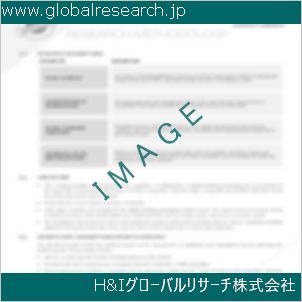Table of Contents
1 Industry Overview of 1,7-Octadiene
1.1 Definition and Specifications of 1,7-Octadiene
1.1.1 Definition of 1,7-Octadiene
1.1.2 Specifications of 1,7-Octadiene
1.2 Classification of 1,7-Octadiene
1.3 Applications of 1,7-Octadiene
1.3.1 Nuclear Application
1.3.2 Non-Nuclear Application
1.4 Industry Chain Structure of 1,7-Octadiene
1.5 Industry Overview and Major Regions Status of 1,7-Octadiene
1.5.1 Industry Overview of 1,7-Octadiene
1.5.2 Global Major Regions Status of 1,7-Octadiene
1.6 Industry Policy Analysis of 1,7-Octadiene
1.7 Industry News Analysis of 1,7-Octadiene
2 Manufacturing Cost Structure Analysis of 1,7-Octadiene
2.1 Raw Material Suppliers and Price Analysis of 1,7-Octadiene
2.2 Equipment Suppliers and Price Analysis of 1,7-Octadiene
2.3 Labor Cost Analysis of 1,7-Octadiene
2.4 Other Costs Analysis of 1,7-Octadiene
2.5 Manufacturing Cost Structure Analysis of 1,7-Octadiene
2.6 Manufacturing Process Analysis of 1,7-Octadiene
3 Technical Data and Manufacturing Plants Analysis of 1,7-Octadiene
3.1 Capacity and Commercial Production Date of Global 1,7-Octadiene Major Manufacturers in 2023
3.2 Manufacturing Plants Distribution of Global 1,7-Octadiene Major Manufacturers in 2023
3.3 R&D Status and Technology Source of Global 1,7-Octadiene Major Manufacturers in 2023
3.4 Raw Materials Sources Analysis of Global 1,7-Octadiene Major Manufacturers in 2023
4 Capacity, Production and Revenue Analysis of 1,7-Octadiene by Regions, Types and Manufacturers
4.1 Global Capacity, Production and Revenue of 1,7-Octadiene by Regions 2019-2024
4.2 Global and Major Regions Capacity, Production, Revenue and Growth Rate of 1,7-Octadiene 2019-2024
4.3 Global Capacity, Production and Revenue of 1,7-Octadiene by Types 2019-2024
4.4 Global Capacity, Production and Revenue of 1,7-Octadiene by Manufacturers 2019-2024
5 Price, Cost, Gross and Gross Margin Analysis of 1,7-Octadiene by Regions, Types and Manufacturers
5.1 Price, Cost, Gross and Gross Margin Analysis of 1,7-Octadiene by Regions 2019-2024
5.2 Price, Cost, Gross and Gross Margin Analysis of 1,7-Octadiene by Types 2019-2024
5.3 Price, Cost, Gross and Gross Margin Analysis of 1,7-Octadiene by Manufacturers 2019-2024
6 Consumption Volume, Consumption Value and Sale Price Analysis of 1,7-Octadiene by Regions, Types and Applications
6.1 Global Consumption Volume and Consumption Value of 1,7-Octadiene by Regions 2019-2024
6.2 Global and Major Regions Consumption Volume, Consumption Value and Growth Rate of 1,7-Octadiene 2019-2024
6.3 Global Consumption Volume and Consumption Value of 1,7-Octadiene by Types 2019-2024
6.4 Global Consumption Volume and Consumption Value of 1,7-Octadiene by Applications 2019-2024
6.5 Sale Price of 1,7-Octadiene by Regions 2019-2024
6.6 Sale Price of 1,7-Octadiene by Types 2019-2024
6.7 Sale Price of 1,7-Octadiene by Applications 2019-2024
6.8 Market Share Analysis of 1,7-Octadiene by Different Sale Price Levels
7 Supply, Import, Export and Consumption Analysis of 1,7-Octadiene
7.1 Supply, Consumption and Gap of 1,7-Octadiene 2019-2024
7.2 Global Capacity, Production, Price, Cost, Revenue, Supply, Import, Export and Consumption of 1,7-Octadiene 2019-2024
7.3 USA Capacity, Production, Price, Cost, Revenue, Supply, Import, Export and Consumption of 1,7-Octadiene 2019-2024
7.4 EU Capacity, Production, Price, Cost, Revenue, Supply, Import, Export and Consumption of 1,7-Octadiene 2019-2024
7.5 China Capacity, Production, Price, Cost, Revenue, Supply, Import, Export and Consumption of 1,7-Octadiene 2019-2024
7.6 Japan Capacity, Production, Price, Cost, Revenue, Supply, Import, Export and Consumption of 1,7-Octadiene 2019-2024
8 Major Manufacturers Analysis of 1,7-Octadiene
8.1 Manufacturer One
8.1.1 Company Profile
8.1.2 Product Picture and Specifications
8.1.2.1 Type I
8.1.2.2 Type II
8.1.2.3 Type III
8.1.3 Capacity, Production, Price, Cost, Gross and Revenue
8.1.4 Contact Information
8.2 Manufacturer Two
8.2.1 Company Profile
8.2.2 Product Picture and Specifications
8.2.2.1 Type I
8.2.2.2 Type II
8.2.2.3 Type III
8.2.3 Capacity, Production, Price, Cost, Gross and Revenue
8.2.4 Contact Information
8.3 Manufacturer Three
8.3.1 Company Profile
8.3.2 Product Picture and Specifications
8.3.2.1 Type I
8.3.2.2 Type II
8.3.2.3 Type III
8.3.3 Capacity, Production, Price, Cost, Gross and Revenue
8.3.4 Contact Information
8.4 Manufacturer Four
8.4.1 Company Profile
8.4.2 Product Picture and Specifications
8.4.2.1 Type I
8.4.2.2 Type II
8.4.2.3 Type III
8.4.3 Capacity, Production, Price, Cost, Gross and Revenue
8.4.4 Contact Information
8.5 Manufacturer Five
8.5.1 Company Profile
8.5.2 Product Picture and Specifications
8.5.2.1 Type I
8.5.2.2 Type II
8.5.2.3 Type III
8.5.3 Capacity, Production, Price, Cost, Gross and Revenue
8.5.4 Contact Information
…
9 Marketing Trader or Distributor Analysis of 1,7-Octadiene
9.1 Marketing Channels Status of 1,7-Octadiene
9.2 Traders or Distributors with Contact Information of 1,7-Octadiene by Regions
9.3 Ex-work Price, Channel Price and End Buyer Price Analysis of 1,7-Octadiene
9.4 Regional Import, Export and Trade Analysis of 1,7-Octadiene
10 Industry Chain Analysis of 1,7-Octadiene
10.1 Upstream Major Raw Materials Suppliers Analysis of 1,7-Octadiene
10.1.1 Major Raw Materials Suppliers with Contact Information Analysis of 1,7-Octadiene
10.1.2 Major Raw Materials Suppliers with Supply Volume Analysis of 1,7-Octadiene by Regions
10.2 Upstream Major Equipment Suppliers Analysis of 1,7-Octadiene
10.2.1 Major Equipment Suppliers with Contact Information Analysis of 1,7-Octadiene
10.2.2 Major Equipment Suppliers with Product Pictures Analysis of 1,7-Octadiene by Regions
10.3 Downstream Major Consumers Analysis of 1,7-Octadiene
10.3.1 Major Consumers with Contact Information Analysis of 1,7-Octadiene
10.3.2 Major Consumers with Consumption Volume Analysis of 1,7-Octadiene by Regions
10.4 Supply Chain Relationship Analysis of 1,7-Octadiene
11 Development Trend of Analysis of 1,7-Octadiene
11.1 Capacity, Production and Revenue Forecast of 1,7-Octadiene by Regions and Types
11.1.1 Global Capacity, Production and Revenue of 1,7-Octadiene by Regions 2024-2029
11.1.2 Global and Major Regions Capacity, Production, Revenue and Growth Rate of 1,7-Octadiene 2024-2029
11.1.3 Global Capacity, Production and Revenue of 1,7-Octadiene by Types 2024-2029
11.2 Consumption Volume and Consumption Value Forecast of 1,7-Octadiene by Regions, Types and Applications
11.2.1 Global Consumption Volume and Consumption Value of 1,7-Octadiene by Regions 2024-2029
11.2.2 Global and Major Regions Consumption Volume, Consumption Value and Growth Rate of 1,7-Octadiene 2024-2029
11.2.3 Global Consumption Volume and Consumption Value of 1,7-Octadiene by Types 2024-2029
11.2.4 Global Consumption Volume and Consumption Value of 1,7-Octadiene by Applications 2024-2029
11.3 Supply, Import, Export and Consumption Forecast of 1,7-Octadiene
11.3.1 Supply, Consumption and Gap of 1,7-Octadiene 2024-2029
11.3.2 Global Capacity, Production, Price, Cost, Revenue, Supply, Import, Export and Consumption of 1,7-Octadiene 2024-2029
11.3.3 USA Capacity, Production, Price, Cost, Revenue, Supply, Import, Export and Consumption of 1,7-Octadiene 2024-2029
11.3.4 EU Capacity, Production, Price, Cost, Revenue, Supply, Import, Export and Consumption of 1,7-Octadiene 2024-2029
11.3.5 China Capacity, Production, Price, Cost, Revenue, Supply, Import, Export and Consumption of 1,7-Octadiene 2024-2029
11.3.6 Japan Capacity, Production, Price, Cost, Revenue, Supply, Import, Export and Consumption of 1,7-Octadiene 2024-2029
12 New Project Investment Feasibility Analysis of 1,7-Octadiene
12.1 New Project SWOT Analysis of 1,7-Octadiene
12.2 New Project Investment Feasibility Analysis of 1,7-Octadiene
13 Conclusion of the Global 1,7-Octadiene (CAS 3710-30-3) Industry 2024 Market Research Report
| ※参考情報 1,7-オクダジエン(CAS 3710-30-3)は、8つの炭素原子を持つ不飽和炭化水素の一種です。化学式はC8H10であり、2つの二重結合を含む特徴を持っています。この化合物は、オクタジエン系列の一つであり、特に1位と7位の炭素原子に二重結合が存在するため、構造的には直鎖状の形態をとります。存在する二重結合の配置により、1,7-オクダジエンは特徴的な化学的性質を示します。 まず、1,7-オクダジエンの特徴として、揮発性と軽い液体の性質が挙げられます。常温常圧では液体であり、その沸点は一般的に低く、揮発しやすいため、取り扱いには注意が必要です。また、不飽和結合があるため、他の化学物質との反応性が高く、様々な化学的変化を経ることができます。 1,7-オクダジエンは、合成化学において重要な中間体として利用されます。特に、ポリマー合成においては、共重合体の原料として重要です。具体的には、1,7-オクダジエンは、スチレンやブタジエンといった他の不飽和炭化水素と共重合することで、特定の物理的特性を持つポリマーを生産することが可能となります。これにより、耐熱性や弾力性などの特性が向上し、工業用途において非常に重宝されています。 さらに、1,7-オクダジエンは、香料や香辛料の合成にも利用されることがあります。一部のフレーバーや香料は、この化合物を出発原料とすることにより、特定の香りを持つ化合物の生成が可能となります。このように、1,7-オクダジエンは香料業界においても価値ある原料として位置づけられています。 関連技術の観点では、1,7-オクダジエンの合成にはいくつかの方法があります。主な方法の一つは、アルケンを出発原料とした化学反応による合成です。この方法では、まず適切なアルケンを用意し、反応条件を調整することで1,7-オクダジエンを得ます。また、異なる反応条件や触媒を使用することで、より高純度の製品を得ることも可能です。 加えて、環境への配慮も重要な観点となっています。化学製品の合成や加工においては、持続可能な方法論が求められる時代となっています。このため、1,7-オクダジエンを含む合成プロセスにおいても、環境に優しい触媒の使用や廃棄物の削減が重要視されています。 1,7-オクダジエンは、他の化合物との反応性も高いため、様々な反応条件下での利用が研究されています。例えば、酸触媒を使用したポリマー化反応や、金属触媒を用いた反応などが検討されており、これにより新たな物質の創出が期待されています。これらの研究は、化学産業だけでなく、材料科学やナノテクノロジーなどの分野にも波及効果を持つでしょう。 さらに、この化合物の特性を活かした新規製品開発への期待も高まっています。例えば、バイオベースの1,7-オクダジエンの合成技術が進められており、再生可能な資源からの合成が可能となることで、持続可能な化学産業の実現が目指されています。この流れにより、従来の石油由来の材料に依存しない製品の開発が進むことが期待されています。 これらを総じて、1,7-オクダジエンは多様な利活用ができる不飽和炭化水素であり、化学産業において重要な役割を果たしています。今後もその用途は広がり、新しい化学反応の開発とともに、環境に配慮した持続可能なプロセスの中でさらなる発展が見込まれます。特に、ポリマーや香料の合成における役割から微細な材料開発への応用に至るまで、その重要性はますます高まっていくことでしょう。 |
❖ 免責事項 ❖
http://www.globalresearch.jp/disclaimer












